
In the ninth century, the legendary evangelizing missionary brothers Cyril (born Constantine) and Methodius and their students devised the first common written language for all Slavs - Old Slavonic. At the time, all Slavic languages were still mutually intelligible (as dialects of the same language), so Old Slavonic came easily to all the Slavs in Moravia, the Balkans and Ancient Russia. Today, this corresponds to the inhabitants of Russia (145.5 million), Ukraine (41.1 million), Belarus (9.2 million), Bulgaria (7 million), Serbia (7 million), Montenegro (630,000), Croatia (4 million), Bosnia and Herzegovina (3.2 million), Northern Macedonia (2 million), the Czech Republic (10.7 million) and Slovakia (5.5 million). Alone among the Slav countries, Old Slavonic did not spread to Poland (38 million) and Slovenia (2 million), where the written language was Latin in the early Middle Ages (there are about 300 million Slavs in total). Between the 11th and 16th centuries, the different Slavic languages underwent fundamental structural changes and formed their own linguistic features and vocabulary. Since then, people living in different parts of the Slav world stopped understanding one another.
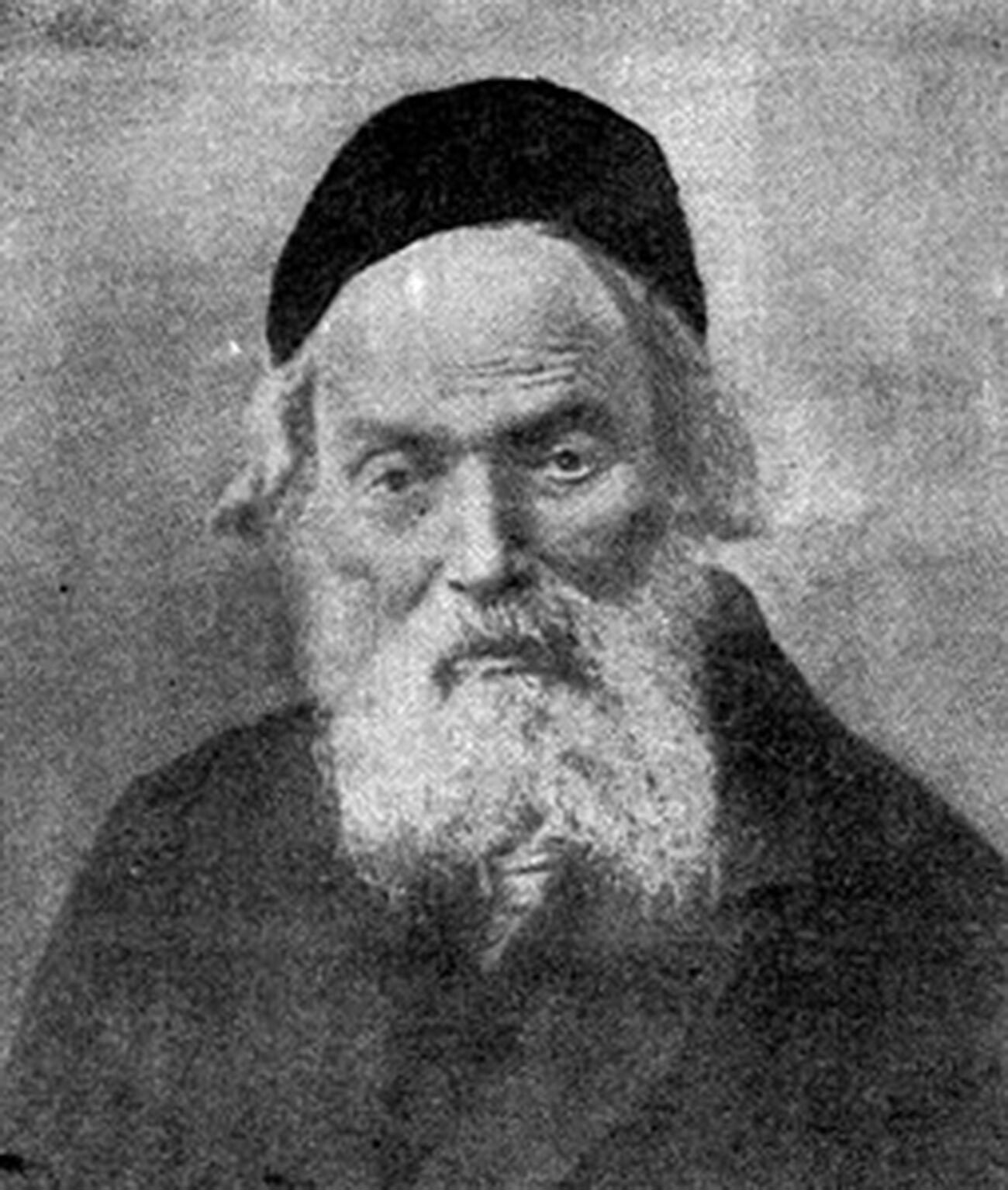
Juraj Križanić.
Public domainOne way or another, until the 18th-19th centuries, the successor of Old Slavonic - Church Slavonic - frequently performed the role of a common language for the Slavs. However, its limited functionality and isolation from real life were recognized by scholars long before the 19th century. The first attempt to go beyond Church Slavonic and devise a common Slavic language in modern times was made by Juraj Križanić, a Croatian missionary, as well as all-round humanitarian and near enough a Renaissance man.
In 1659, as a subject of the Habsburg Empire, a Catholic priest and theologian, he arrived in Moscow to enter the service of Russian Tsar Alexei Mikhailovich. However, his ideas about the need for a union between the Orthodox and Catholic churches for the sake of the unity of all Slavs were received without enthusiasm at the Russian Court. A few years later, the Croat with his novel ideas was exiled out of harm’s way to Tobolsk, the then capital of Siberia. He was allocated a stipend of 90 rubles a year, which was a very reasonable allowance by the standards of the time and quite sufficient for Križanić to actively devote himself to his writing for the next 16 years.
From the idea of unifying all the Slavs, he logically moved on to the idea of the need to create a modern common Slavic language based on Russian (which he considered to be the oldest, purest and most developed among the Slavic languages). In 1665, he wrote ‘Gramatično Izkazanje ob Ruskom Jeziku’, in which by “Russian language” he meant not the Russian language of that period but, in fact, the common Slavic language he was devising.
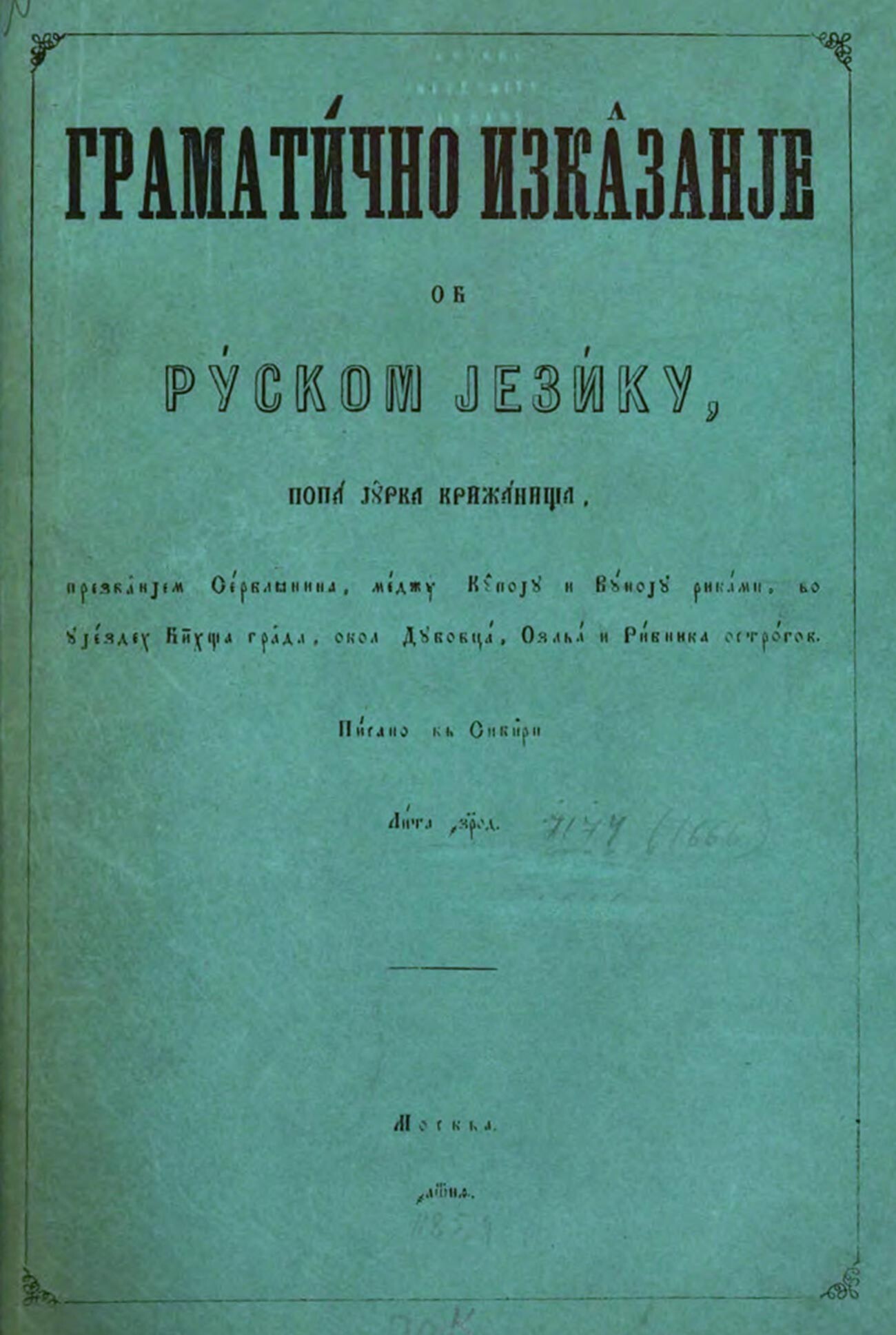
Front page of "Gramatično izkazanje ob ruskom jeziku" (ca. 1665) by Juraj Križanić, the first Interslavic grammar.
Public domainMore than 60 percent of its vocabulary consisted of carefully selected common Slavic words, 10 percent were Russian and Church Slavonic, nine percent were taken from the dialect of the author’s native language, 2.5 percent from Polish and the remaining words from other Slavic languages.
From the academic point of view, Križanić’s experiment was very successful. His work is often described as the first study of the comparative grammar of languages (and not just Slavic ones!) in Europe. Moreover, by calling his common Slavic language “Russian”, the Croatian thinker identified a trend that would dominate the sphere of inter-Slav communication until the end of the 20th century…
As it grew in might, the Russian Empire (which, after the final partition of the Polish Republic, became the sole Slav state in the world) was for several centuries up to the early 20th century the uncontested political and cultural reference point for the majority of the Slav intelligentsia then living within the confines of the Habsburg-governed Austrian Empire and in the Ottoman Empire. Križanić’s ideas inevitably found a logical continuation in the philosophy of Pan-Slavism - the unification of all Slavs within a single state under the rule of the Russian monarch.
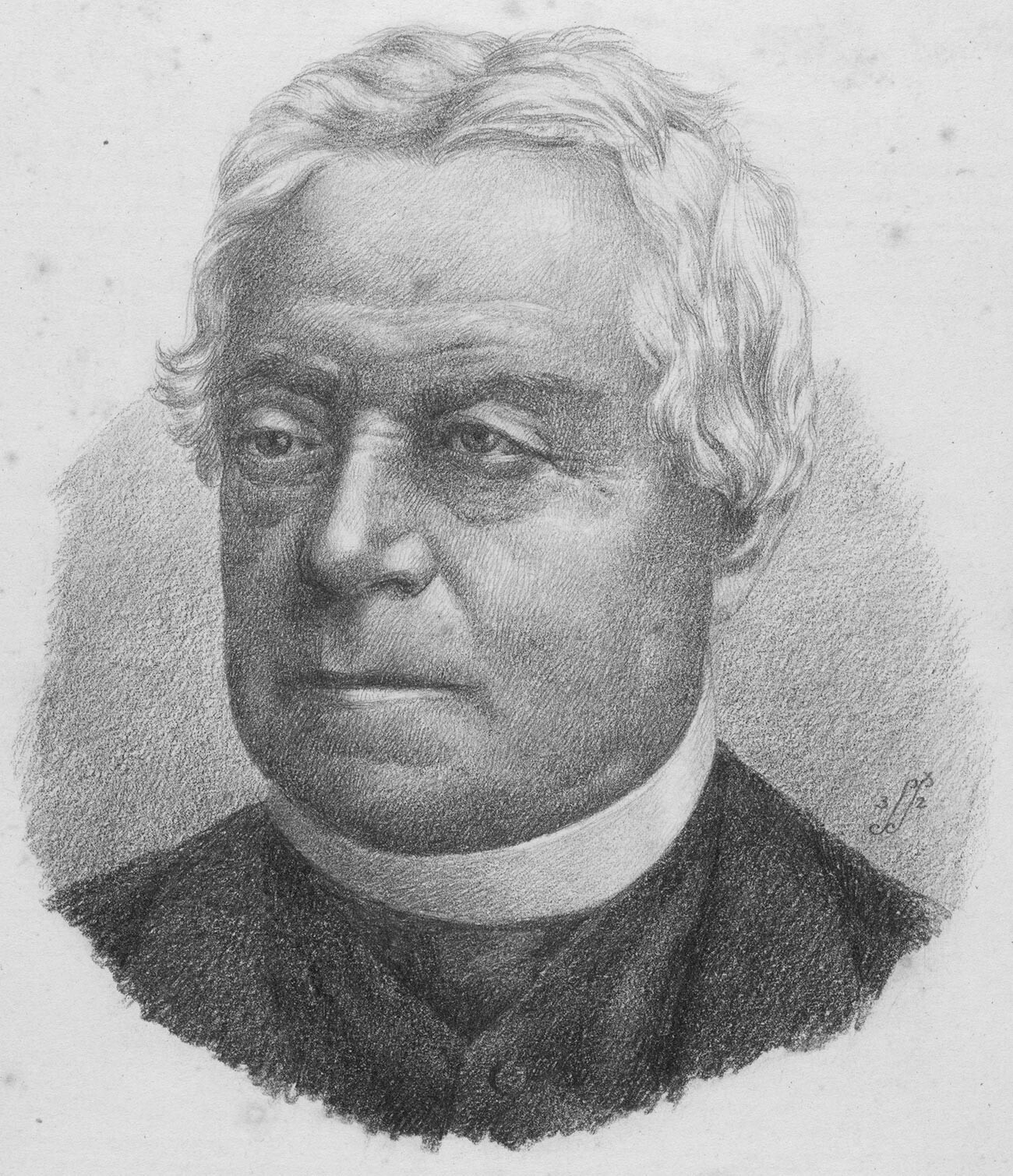
Matija Majar.
Public domainPan-Slavist ideology was based on the premise that in future all Slavs should “return” to a common language comprehensible to all Slavs. Some enthusiasts proposed their own projects for a Common Slavic language, notable among whom were the Slovak Ján Herkeľ, with his Universalis Lingua Slavica (1826), and Matija Majar, a Slovene, and his Uzajemni Pravopis Slavjanski (1865). The influence of Russian culture and language on the Slavic scholars of that era was so great, however, that, by and large, they were completely focused on adapting contemporary Russian culture to their own countries in their own languages. The majority of them knew Russian to a greater or lesser degree and, in reality, there was no particular need for strenuous endeavors to devise a separate Pan-Slavic language.
After 1917, the Russian language retreated, but not for long, from its dominant position in the Slav world, returning again after 1945 as the de facto principal language of the entire socialist bloc. After World War II and right up to the end of the 1980s, all the Slav peoples were building socialism under Moscow’s solicitous guidance. After the collapse of the USSR, Russia lost its attraction for the other Slav peoples and the prestige of Russian declined sharply in the region. Thus, it was that, at the turn of the century, the problem of a common language for all Slavs resurfaced once more.
Despite the fact that, at the start of the present century, the majority of former countries of the socialist bloc embarked on active integration with Western Europe, the need for a common language did not disappear; if anything, it increased. Business collaboration, accessible tourism and limitless internet communication promoted closer contacts among the populations of various countries of Eastern and Central Europe. Not everyone was able to learn English and the reasonable notion that it was simpler and more natural for Slavs to communicate amongst each other in a familiar language hung in the air. Projects to design a common Slavic language for the 21st century differ fundamentally from their predecessors in that they are completely devoid of any Pan-Slavic ideology and proclaim purely practical goals.
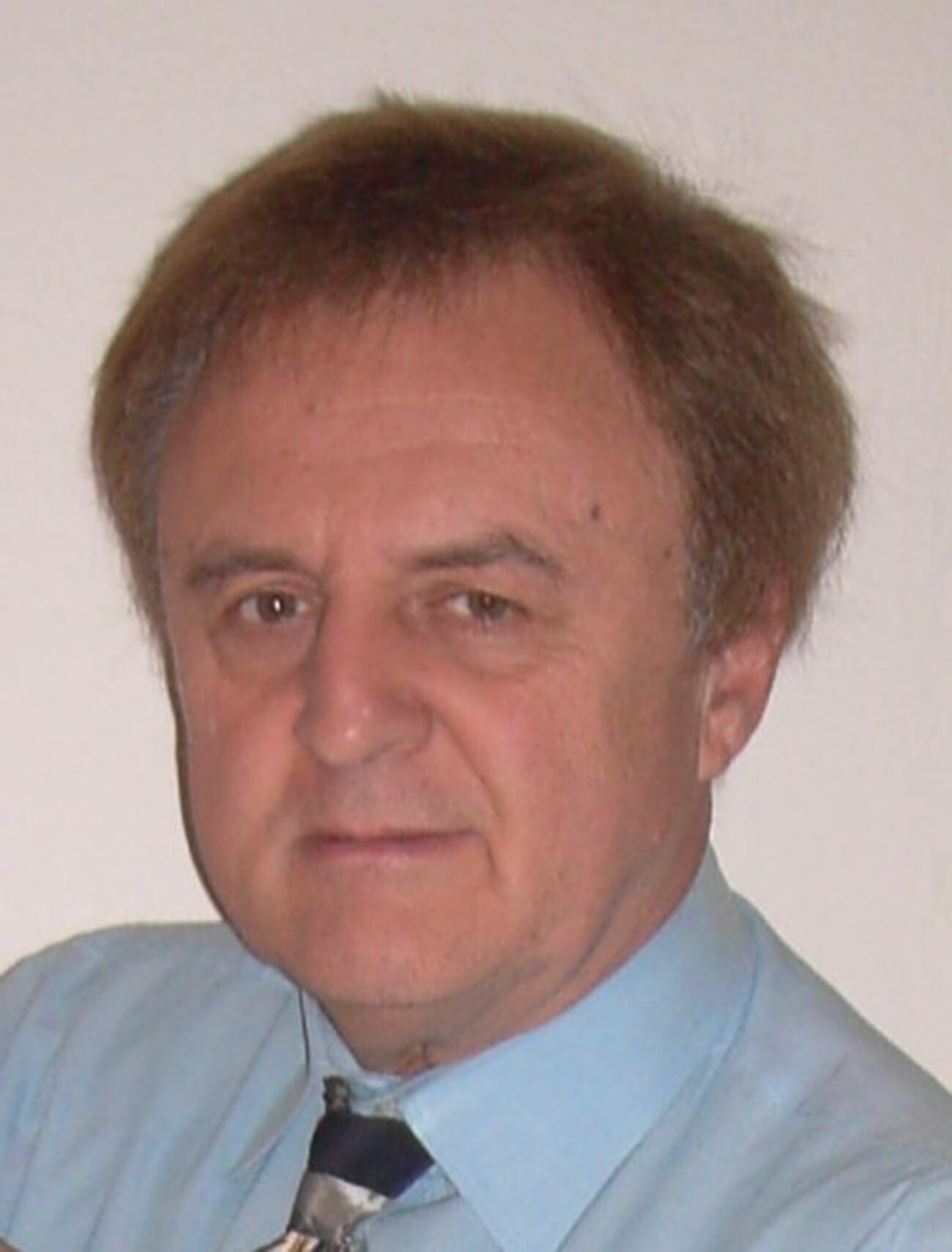
Mark Hučko.
Personal ArchiveThe first to emerge was ‘Slovio’, which was developed from 1999 onwards by Slovak linguist Mark Hučko using Slavic lexical material and principles similar to Esperanto. Slovio failed to win popularity, however. Many users were put off by its artificiality and similarity to Esperanto. People were irritated by the alien plural -s ending and also the “ugliness” of its written form. After releasing several versions of Slovio, Mark Hučko seems to have become disillusioned with his brainchild and, in 2010, stopped replying to letters and updating the project’s website.
In 2006, Slovio acquired a competitor - the ‘Slovianski’ language devised by Czechs Ondrej Rečnik and Gabriel Svoboda, along with Dutchman Jan van Steenbergen. The goal of the developers was to create a language common to all Slavs, using the vocabulary of contemporary Slavic languages and imitating their grammar.
In 2009, American Steeven Radzikowski, Pole Andrej Moraczewski and Czech Michal Borovička proposed the Slovioski project - essentially a hybrid of Slovio and Slovianski. In the same year, Czech software engineer Vojtěch Merunka published a monograph, ‘The Neoslavonic Language’, in which he attempted to combine the contemporary Slavic vocabulary of Slovianski with the grammar and vocabulary of the classical Common Slavic languages - Old Slavonic and Church Slavonic.
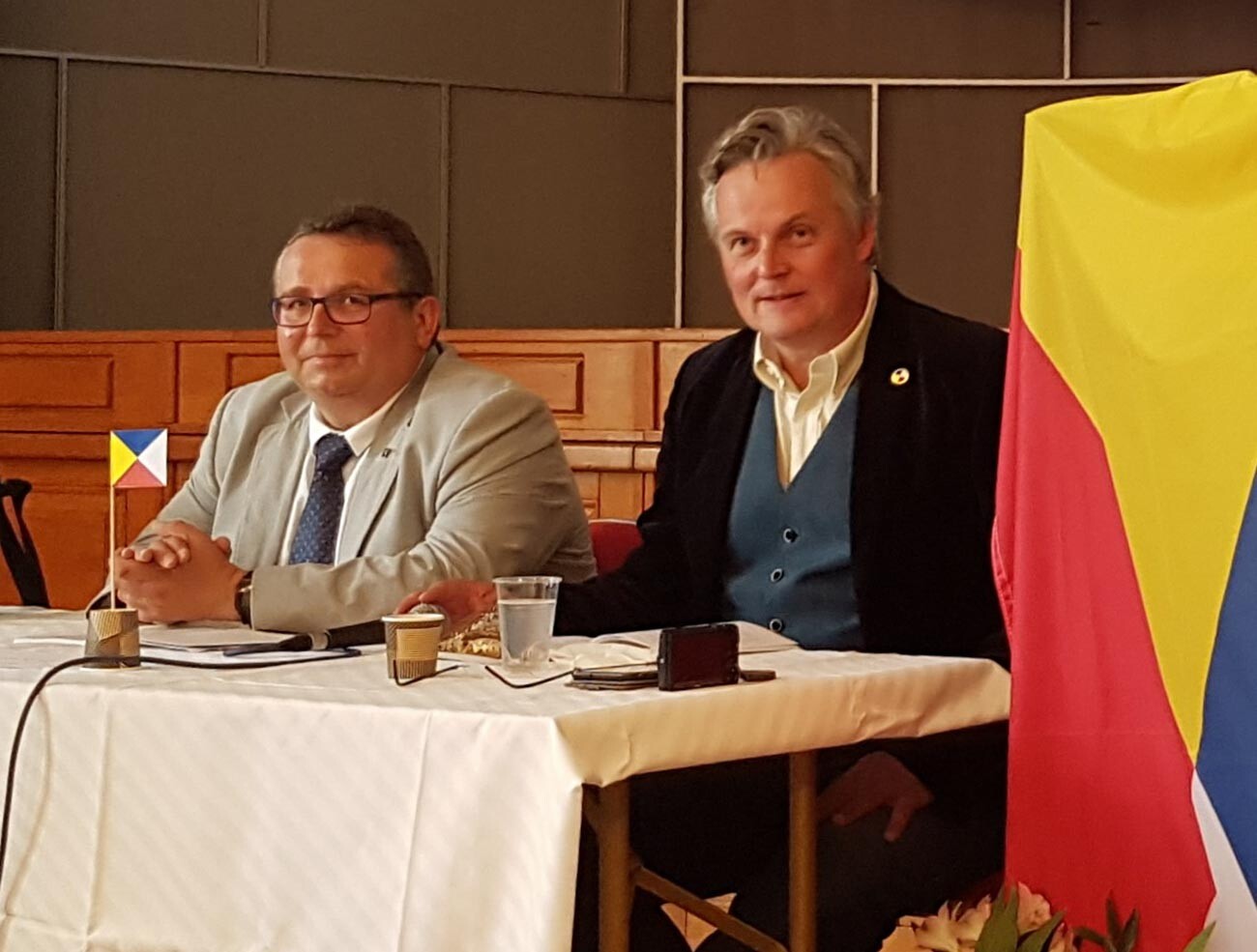
Vojtěch Merunka and Jan van Steenbergen, 2018.
IJzeren Jan (CC BY-SA 4.0)In 2011, the Slovianski, Slovioski and Neoslavonic language project teams announced the need to join forces and, in 2017, finally put all their efforts together under the one roof of the new Interslavic project. Further work on the language was put in the hands of a special committee consisting of Merunka and van Steenbergen, already referred to above, as well as Pole Michał Swat, Czech Roberto Lombino and Russian Pavel Skrylev.
Today’s Interslavic exists in two alternative alphabets: a mixed Czech-Croatian version of Latin and a Cyrillic, which combines Russian letters with Serbian and Ukrainian. Grammatically, it is positioned as closely as possible to the natural Slavic languages, although the syntax is streamlined and the morphology has been suitably tidied up to remove exceptions and irregularities.
Interslavic has quite an extensive, carefully calibrated vocabulary of more than 17,000 words, which is regularly added to in such a way as to ensure that the language in both its written and spoken form is by and large comprehensible to any reasonably educated native speaker of one of the Slavic languages. The “Interslavicists” maintain an Interslavic dictionary (it currently has more than 17,500 words); they have their own websites – one for showcasing Interslavic and a news site; they have their own YouTube channel with almost 10,000 subscribers; a Facebook group with 17,000 subscribers; and other social media accounts. Despite the fact that Interslavic has proved to be significantly more natural and viable than Slovio, the project has not in the main managed yet to break out of its small circle of enthusiasts and several thousand like-minded followers and aficionados.
Dear readers,
Our website and social media accounts are under threat of being restricted or banned, due to the current circumstances. So, to keep up with our latest content, simply do the following:
If using any of Russia Beyond's content, partly or in full, always provide an active hyperlink to the original material.
Subscribe
to our newsletter!
Get the week's best stories straight to your inbox